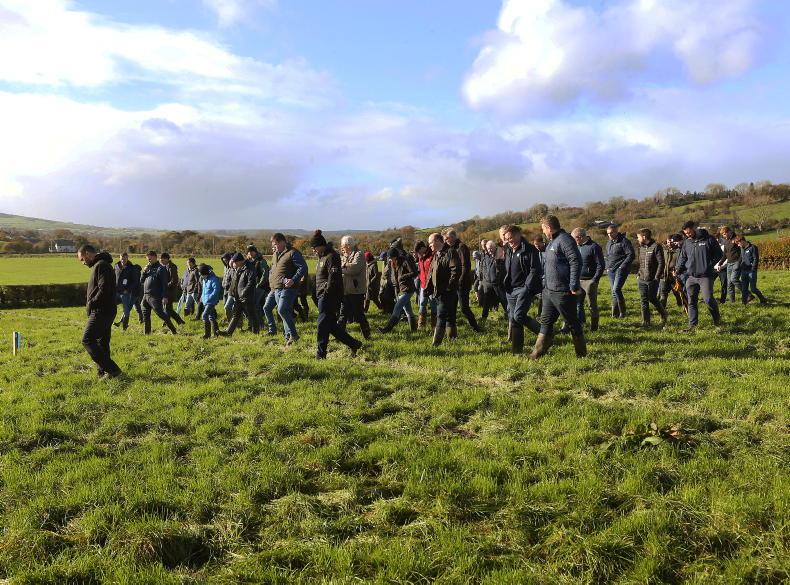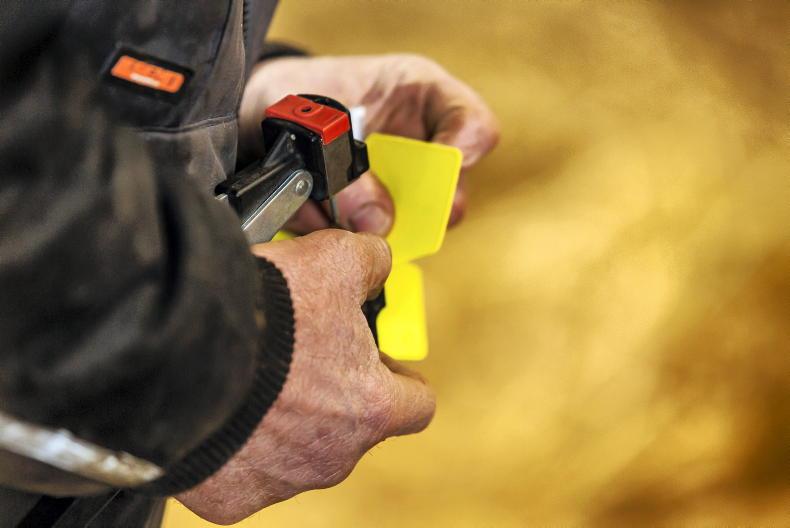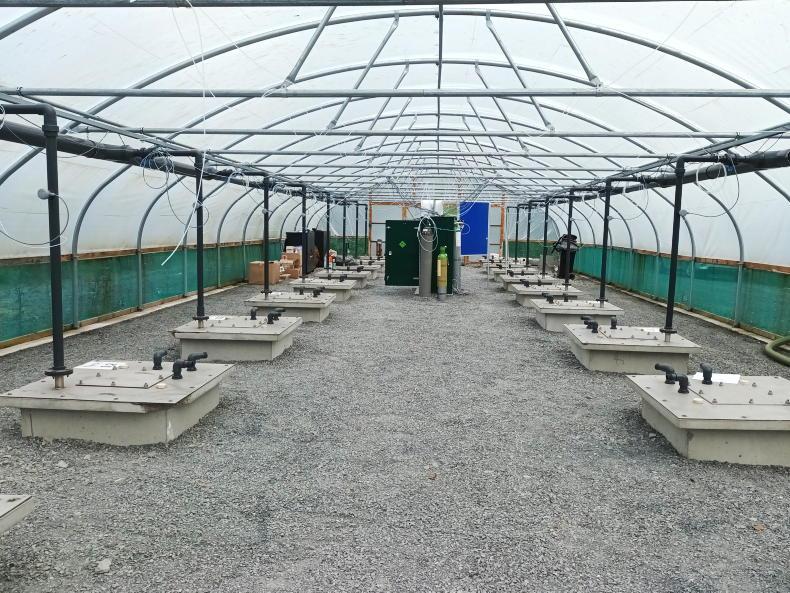To contribute our “fair share” as part of the UK’s international commitment to reduce ammonia emissions under the 1999 Gothenburg Protocol, NI emissions in 2030 need to be down by at least 30% when compared to 2020 levels.
Achieving that will be very challenging, with a DAERA document to accompany a new draft ammonia strategy consultation suggesting that uptake of measures to deliver this reduction will “represent a transformational change in farming practice in NI”.
Many of those actions to cut ammonia emissions have been assessed by researchers at the Agri-Food and Biosciences Institute (AFBI) and Rothamsted Research. The work showed that adoption of the five most cost-effective measures would deliver a 21% reduction in ammonia in NI, and come with an annual cost of £6.6m per year when compared to the alternative of a “business as usual” approach.
However, if all 11 measures assessed by researchers were implemented by farmers, this would deliver a reduction of up to 28% in emissions, but the annual cost was up sharply to £43.65m. Despite that big increase in costs, this second option is the one preferred in the draft strategy put out for consultation by DAERA.
The five most cost-effective measures to cut ammonia emissions include:
1 Low-emission slurry spreading equipment (LESSE). Uptake of 100% on farms delivers reductions of up to 10%.
2 Extending the grazing season by two weeks. Research suggests this will cut emissions by 3%.
3 Use of protected urea fertiliser. Switching from straight urea to protected urea will reduce total ammonia emissions by 1.5%. The DAERA consultation includes a timeline of 30 June 2024 for local legislation to be introduced that will ban the use of unprotected urea fertiliser.
4 Reducing the crude protein content of livestock diets. Across all livestock sectors, research suggests that lower protein diets could reduce total ammonia emissions by up to 9%.
5 Improve feed efficiency through genetics. Selecting breeding stock that excrete less nitrogen per kg of meat or milk could reduce overall emissions by 4%.
Outside of these first five measures, there are then those that come at a higher cost for the gains achieved.
Slurry
They include covering above-ground slurry stores and lagoons to prevent ammonia being lost to the atmosphere. Covering all these installations would cut emissions by 1.3%, although the Department recognises that this might not be practical in all situations, and there are health and safety risks.
Inside livestock housing, the DAERA consultation highlights that various “appropriate technologies” can deliver large reductions in ammonia emissions, totalling up to 8% if uptake among farmers is high.
Some of the technologies listed include slat mats in dairy and beef housing, with the curved nature of the mat helping to get urine and faeces rapidly into an underground tank.
In pigs and poultry, the likes of air scrubbers can also reduce emissions. “We want to support farmers to install ammonia reduction technologies in livestock housing through financial assistance,” states the DAERA document.
It also lists some “emerging technologies” that could deliver lower ammonia emissions and improve the efficiency of nutrient use. These include acidification of slurry and systems that can separate urine and faeces in cattle housing.
Trees
One final measure in the DAERA consultation concerns the establishment of trees around farmyards, with the document quoting research which suggests 15% to 25% of ammonia from livestock housing can be captured by “appropriately designed tree plantations”.
Livestock dominate
NI emissions
Ammonia is produced when faeces and urine mix, so the vast majority of emissions are related to the management and handling of livestock manure.
Despite only having 6% of UK land area, a large livestock population means that NI accounts for 12% of UK ammonia emissions. Agriculture is responsible for 97% of NI ammonia emissions, and within that, two-thirds can be attributed to cattle. The poultry sector is responsible for 12.3%, pigs account for 7.8% and sheep produce just 2.6% of emissions. Remaining emissions result from when fertiliser and digestate (from anaerobic digestors) is spread on land.
Much has been written in recent years about the difficulty in obtaining planning permission for new livestock housing within 7.5km of designated sites (mostly bogs) due to concerns about the impact of nitrogen deposition coming from ammonia.
According to the DAERA consultation, there are 394 sites of high nature conservation value across NI, and 250 of these are sensitive to the impacts of ammonia and nitrogen.
“The vast majority of designated sites are currently experiencing ammonia concentrations and nitrogen deposition above the critical levels and loads at which damage to plants may occur,” states the DAERA document.
Read more
Ammonia from pigs halved by diet change
Ammonia reduction will require big changes
To contribute our “fair share” as part of the UK’s international commitment to reduce ammonia emissions under the 1999 Gothenburg Protocol, NI emissions in 2030 need to be down by at least 30% when compared to 2020 levels.
Achieving that will be very challenging, with a DAERA document to accompany a new draft ammonia strategy consultation suggesting that uptake of measures to deliver this reduction will “represent a transformational change in farming practice in NI”.
Many of those actions to cut ammonia emissions have been assessed by researchers at the Agri-Food and Biosciences Institute (AFBI) and Rothamsted Research. The work showed that adoption of the five most cost-effective measures would deliver a 21% reduction in ammonia in NI, and come with an annual cost of £6.6m per year when compared to the alternative of a “business as usual” approach.
However, if all 11 measures assessed by researchers were implemented by farmers, this would deliver a reduction of up to 28% in emissions, but the annual cost was up sharply to £43.65m. Despite that big increase in costs, this second option is the one preferred in the draft strategy put out for consultation by DAERA.
The five most cost-effective measures to cut ammonia emissions include:
1 Low-emission slurry spreading equipment (LESSE). Uptake of 100% on farms delivers reductions of up to 10%.
2 Extending the grazing season by two weeks. Research suggests this will cut emissions by 3%.
3 Use of protected urea fertiliser. Switching from straight urea to protected urea will reduce total ammonia emissions by 1.5%. The DAERA consultation includes a timeline of 30 June 2024 for local legislation to be introduced that will ban the use of unprotected urea fertiliser.
4 Reducing the crude protein content of livestock diets. Across all livestock sectors, research suggests that lower protein diets could reduce total ammonia emissions by up to 9%.
5 Improve feed efficiency through genetics. Selecting breeding stock that excrete less nitrogen per kg of meat or milk could reduce overall emissions by 4%.
Outside of these first five measures, there are then those that come at a higher cost for the gains achieved.
Slurry
They include covering above-ground slurry stores and lagoons to prevent ammonia being lost to the atmosphere. Covering all these installations would cut emissions by 1.3%, although the Department recognises that this might not be practical in all situations, and there are health and safety risks.
Inside livestock housing, the DAERA consultation highlights that various “appropriate technologies” can deliver large reductions in ammonia emissions, totalling up to 8% if uptake among farmers is high.
Some of the technologies listed include slat mats in dairy and beef housing, with the curved nature of the mat helping to get urine and faeces rapidly into an underground tank.
In pigs and poultry, the likes of air scrubbers can also reduce emissions. “We want to support farmers to install ammonia reduction technologies in livestock housing through financial assistance,” states the DAERA document.
It also lists some “emerging technologies” that could deliver lower ammonia emissions and improve the efficiency of nutrient use. These include acidification of slurry and systems that can separate urine and faeces in cattle housing.
Trees
One final measure in the DAERA consultation concerns the establishment of trees around farmyards, with the document quoting research which suggests 15% to 25% of ammonia from livestock housing can be captured by “appropriately designed tree plantations”.
Livestock dominate
NI emissions
Ammonia is produced when faeces and urine mix, so the vast majority of emissions are related to the management and handling of livestock manure.
Despite only having 6% of UK land area, a large livestock population means that NI accounts for 12% of UK ammonia emissions. Agriculture is responsible for 97% of NI ammonia emissions, and within that, two-thirds can be attributed to cattle. The poultry sector is responsible for 12.3%, pigs account for 7.8% and sheep produce just 2.6% of emissions. Remaining emissions result from when fertiliser and digestate (from anaerobic digestors) is spread on land.
Much has been written in recent years about the difficulty in obtaining planning permission for new livestock housing within 7.5km of designated sites (mostly bogs) due to concerns about the impact of nitrogen deposition coming from ammonia.
According to the DAERA consultation, there are 394 sites of high nature conservation value across NI, and 250 of these are sensitive to the impacts of ammonia and nitrogen.
“The vast majority of designated sites are currently experiencing ammonia concentrations and nitrogen deposition above the critical levels and loads at which damage to plants may occur,” states the DAERA document.
Read more
Ammonia from pigs halved by diet change
Ammonia reduction will require big changes









SHARING OPTIONS